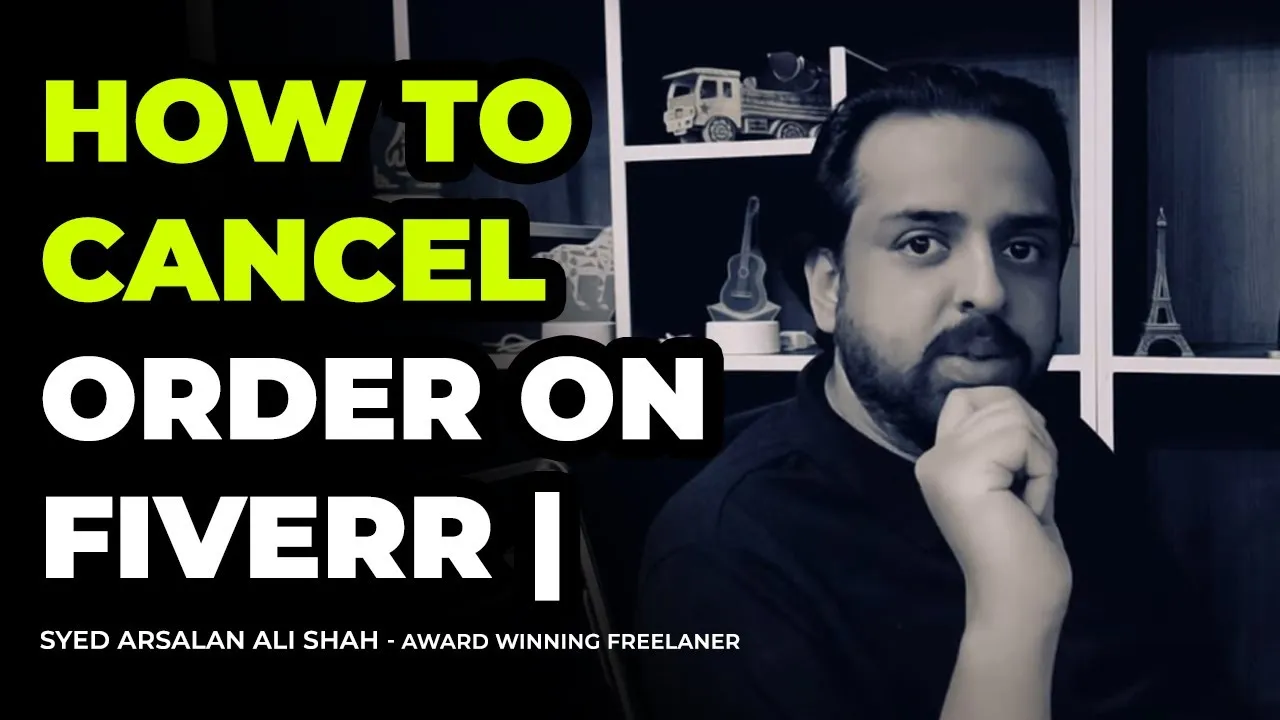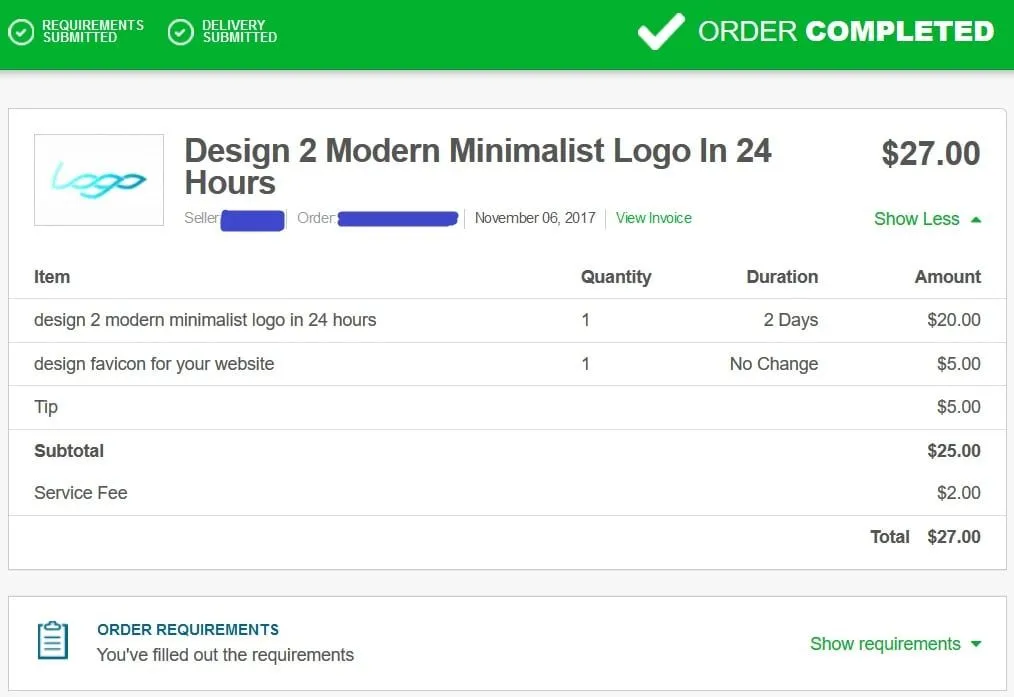When working as a freelancer on platforms like Fiverr, you may find yourself in situations where you need to reject an order. It can feel uncomfortable, but knowing how to navigate this process with professionalism is crucial. In this blog post, we’ll explore the ins and outs of rejecting an order on Fiverr, why it might be necessary, and how you can go about doing it without burning bridges. Let’s dive in!
Understanding Fiverr's Order System

To effectively navigate the process of rejecting an order on Fiverr, it’s essential to have a solid understanding of how the platform's order system works. Here’s a brief overview:
- Gig Creation: When you set up your profile, you create "gigs" that outline the services you offer. These gigs come with detailed descriptions of what buyers can expect.
- Order Confirmation: When a buyer selects your gig and places an order, it’s confirmed, and an agreement is formed. This triggers a countdown for delivery and the money is held in escrow.
- Delivery and Revisions: After you deliver the order, the buyer has the option to request revisions. They can also approve the order, releasing the payment to you.
Now, why might you need to reject an order? There are several reasons, such as:
- Unrealistic Expectations: If a buyer requests something beyond your skill set or the scope of your gig.
- Time Constraints: If you're already overwhelmed with work and can’t meet the deadlines.
- Miscommunication: When a buyer may have misunderstood the service you’re offering.
Understanding these elements of Fiverr's order system can help you approach order rejection in a way that is gracious and respectful, ensuring that you maintain a positive relationship with potential future clients.
Also Read This: How Much Freelance Models Charge and Make
Reasons for Rejecting an Order

When it comes to freelancing on platforms like Fiverr, rejection can be a tough pill to swallow, but there are valid reasons to consider it. Knowing when it’s appropriate to turn down an order helps you maintain your standards, protect your reputation, and manage your workload effectively. Here are some common reasons for rejecting an order:
- Unclear Instructions: If the client hasn’t provided sufficient details or guidance, it’s essential to address this. Rather than jumping into the project, politely requesting more information might save you both time and frustration.
- Unrealistic Deadlines: Sometimes clients may set deadlines that are simply too tight to meet. If an order requires more time than what’s offered, it's better to reject the order than to compromise on quality.
- Budget Constraints: If a project’s budget doesn't align with the effort required, you might feel it’s best to step away. High-quality work deserves fair compensation, and if this isn’t the case, turning it down is justifiable.
- Incompatible Skill Set: If you recognize that the project requires skills you don’t possess, it’s wise to reject it. Taking on work outside your expertise can lead to below-standard output and potential negative reviews.
- Negative Client History: Have you encountered issues with a client in the past? If their previous behavior raises red flags, it may not be worth the risk to engage again.
Understanding these reasons empowers you to make thoughtful decisions about which orders to accept and which to decline.
Also Read This: Can I Message Someone on Fiverr Without Paying?
Steps to Reject an Order on Fiverr

Declining an order on Fiverr isn't just about saying "no." It involves a few thoughtful steps to ensure the process is respectful and professional. Here’s a step-by-step guide to help you navigate the rejection:
- Review the Order: Before making a decision, take the time to thoroughly assess the order details. Confirm the reasons you’re considering rejecting it.
- Communicate Early: Don’t wait too long to respond. Reach out to the client as soon as you decide to reject the order to maintain transparency.
- Use a Polite Tone: Write a courteous message explaining your reason for rejection. It’s best to keep it professional and avoid being overly blunt.
- Offer Alternatives: If possible, suggest another seller whose skills might better match the client's needs. This shows you care about their project, even if you can't take it on.
- Send a Formal Rejection: Fiverr allows you to formally reject an order through the “Resolution Center.” Follow the prompts to submit your rejection officially.
- Maintain Your Profile: After rejecting the order, keep your profile active and responsive. Good communication in the future can affirm your professionalism.
By following these steps, you can reject an order respectfully while preserving your integrity as a seller on Fiverr.
Also Read This: How to Be a Freelancer on Fiverr
5. Communicating with the Buyer

When it comes to rejecting an order on Fiverr, clear and respectful communication is key. You want to make sure that the buyer understands your decision and feels valued, even if the outcome isn't what they hoped for. Here are some tips on how to effectively communicate with your buyer:
- Be Prompt: Try to communicate as soon as possible. Delaying your message can create frustration for the buyer.
- Be Honest: Clearly explain your reasons for rejecting the order. Whether it's due to workload, mismatched expectations, or personal circumstances, honesty goes a long way.
- Be Polite: Use polite language. Starting your message with a simple "Thank you for your order" can set a positive tone, even if you have to decline.
- Offer Alternatives: If appropriate, suggest other sellers on Fiverr who might be able to fulfill their needs. This shows you care about the buyer's experience.
- Encourage Future Engagement: Let them know that they are welcome to come back for future projects that might align better with your skills and availability.
For example, your message could look something like this:
“Hi [Buyer’s Name], thank you for your order! Unfortunately, I won't be able to take on this project due to my current schedule. I really appreciate your interest and encourage you to check out [other seller’s profile/link] who might be able to assist you. I hope to work with you in the future!”
By following these guidelines, you can ensure that your communication is professional and leaves a positive impression.
Also Read This: How to Get Orders on Fiverr: A Comprehensive Guide
6. Potential Consequences of Order Rejection
Rejecting an order on Fiverr isn’t a decision to take lightly. It can come with some potential consequences that you should be aware of, especially in terms of your profile and future orders. Here’s a rundown of what you might face:
| Consequence | Details |
|---|---|
| Impact on Metrics | Every rejected order can negatively affect your completion rate, which in turn can influence your ranking on the platform. |
| Hearts and Reviews | Buyers who have their orders rejected may leave less favorable feedback or reviews, affecting your overall reputation. |
| Buyer Trust | Repeated rejections may cause potential buyers to question your reliability, making them hesitant to place orders with you. |
| Fiverr Policies | Frequent rejections could trigger a review from Fiverr, especially if it appears you're regularly taking on orders you can’t fulfill. |
In conclusion, while it's important to maintain your well-being and manage your workload, consider the potential consequences of rejecting an order. Strive for a balance that allows you to maintain professionalism while also guarding your reputation.
Also Read This: How to Set Up a Fiverr Seller Account
7. Best Practices for Handling Order Rejections
When it comes to rejecting orders on Fiverr, the approach you take can significantly impact your reputation and future business relationships. Here are some best practices to follow that can help maintain professionalism while navigating the delicate process of order rejections:
- Communicate Early: If you foresee any issues with an order, let the buyer know as soon as possible. Early communication helps set clear expectations and minimizes disappointment.
- Be Honest and Transparent: When rejecting an order, provide honest reasons. Whether it’s because of workload, skill mismatch, or time constraints, being transparent can foster understanding and respect from the buyer.
- Use the Right Tone: Your choice of words can shape the buyer’s reaction. Keep your tone polite and respectful, even if the situation is frustrating. This helps maintain a good rapport.
- Offer Alternatives: Instead of simply rejecting an order, consider suggesting alternative solutions. For example, if you're unable to take on the project, recommend another freelancer who might be a good fit.
- Document Everything: Keep a record of communications regarding the order rejection. This documentation can be valuable if misunderstandings arise later.
- Request Feedback: After handling a rejection, you might want to ask the buyer for feedback on how you managed the situation. Constructive criticism is an opportunity for growth.
By following these best practices, you can handle order rejections professionally, paving the way for positive future interactions, even with those clients you couldn’t work with this time.
8. Conclusion
Rejecting an order on Fiverr can feel daunting, but it’s important to remember that it’s a natural part of freelancing. The key lies in how you manage those rejections. By applying best practices—communicating effectively, being transparent, and maintaining professionalism—you can minimize any negative impact on your reputation.
Remember, every interaction counts. A well-handled rejection can actually enhance your professional image, making buyers more likely to return to you for future projects. They may appreciate your honesty and the way you handled what could have been a frustrating situation.
Fostering a respectful and positive atmosphere, even during rejections, can lead to stronger relationships down the line. So, embrace the process, and don’t forget: it’s not just about saying “no,” it’s about the approach you take in doing so. Happy freelancing!



